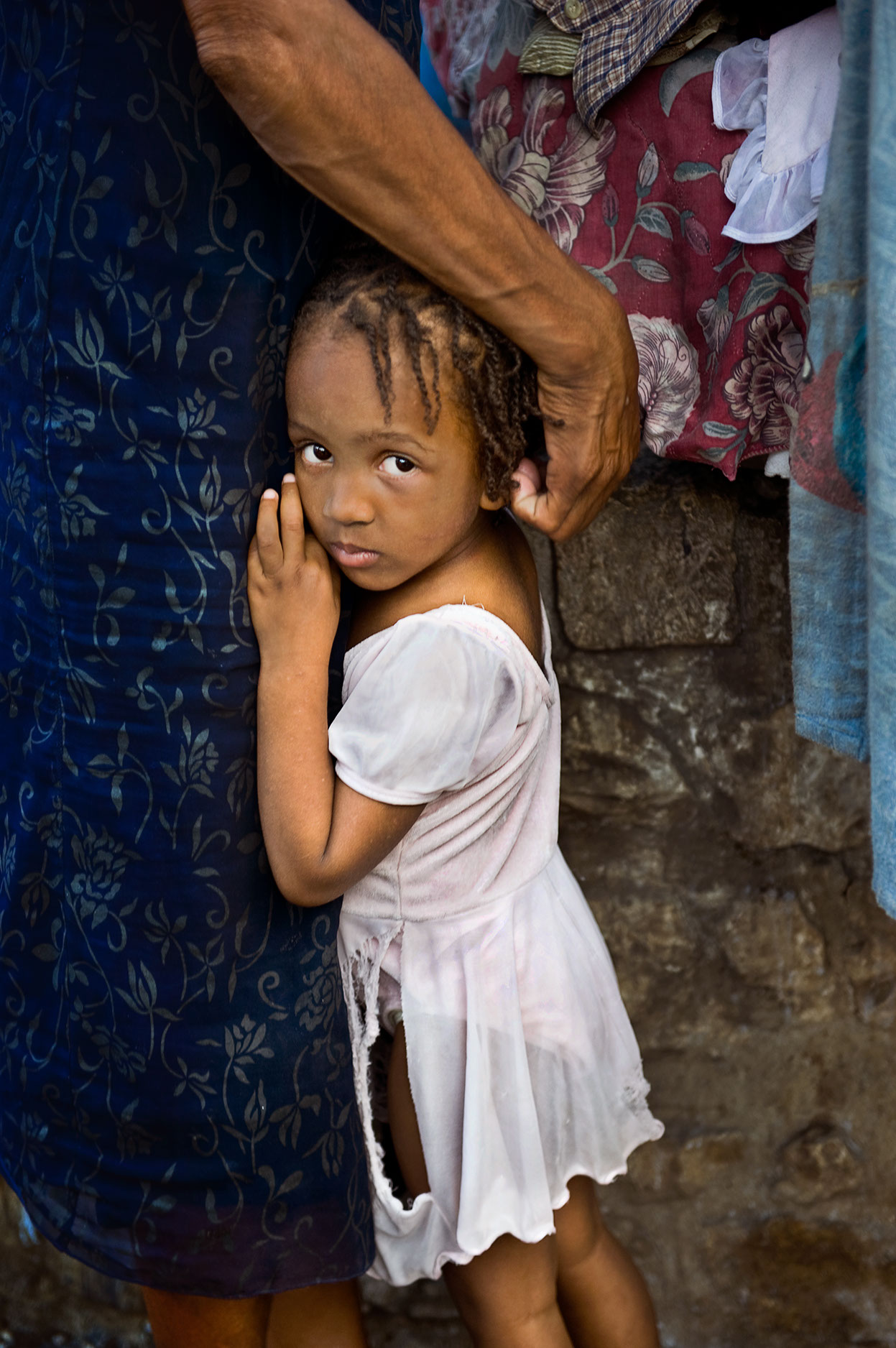
I’ve recently returned from my second trip to Haiti. Thanks to all of you who made generous donations to my Faces of Hope Fund. Due to your generous support we were able to supply a few thousand dollars towards much needed tents. I’ve covered the aftermath of the tsunami in Sri Lanka and Katrina, yet nothing has come near the devastation I witnessed in this country. Quite honestly, until this happened, it was never even on my radar to go to there. Now, this is place I can’t shake, burrowed deep under my skin.

Right after the quake hit, on January 12, 2010, I had been staying at the decadent $10,000 a night villa at the Amanyara on Turks and Caicos Island, one of the prettiest resorts I’ve ever photographed, when I got a call from Stanley Lucas, a Haitian politician in Washington, DC. He was intent on helping me get into his country and asked how soon I could be ready for the short 35-minute flight. He made all the arrangements as I begged and borrowed socks, t-shirts and boots from other tourists. I raided the mini-bar for a few snacks and bottles of water and besides my camera gear that’s all I went with.
And so I arrived, about ten days after the quake had hit. A pastor drove me the eight hours over the treacherous cratered, pot-holed road from Cap Haitian to Port a Prince. It was a starless night when we arrived in the strange city, with no electricity and I had absolutely point of reference as to where I was. But then neither, it seemed, did the frantic, weeping, people who packed the streets. Even those who had houses were too afraid to go inside because of the ongoing tremors. The pastor dropped me at Stanley’s friends house, Cecile Arty, where all of Cecile’s family members were congregated under less than ideal circumstances: her brothers, sisters and mother had all lost their homes. I think they thought I was coming for dinner. Nearly three weeks later I was still sleeping in their backyard with them. Yet they never asked when I was leaving.
As is always the way, it seems the people who have the least, give the most. Every morning there was a cup of thick Haitian coffee boiled for me. (In fact when I did leave, I found that Cecile had stuck two pounds of the coffee beans I’d come to love into my backpack.) I’d leave at dawn and shoot all day, returning to my backyard haven long after nightfall, weary and over-whelmed from the horrors that had filled my heart and eyes. I spent hours downloading my cards, but it was too difficult to mentally process what I’d seen.
Upon returning every evening I’d take off my boots, because they were covered in the human fluid I had trodden through, all that was often left, I realized, of a person. A person who had once been someone’s loved one. Grandma would give me kiss on the cheek, and miraculously a bucket of water would appear so I could wash myself and my one shirt and pair of pants for the next day. Cecile made sure I had a hot meal every evening, which was especially welcome as no food had been available to me all day. And of course, they wouldn’t accept a cent. Most importantly, this family became my family, and cared that I came home at night. They were a touchstone in a world of chaos.

A lot has been said about the resiliency and the tenacity of the Haitian people, and that is what really struck me so deeply. Their infectious smiles and graciousness despite the unimaginable hardships they’ve endured, is truly humbling. These are a people who have had a lot of practice surviving–hurricanes, floods, an economy where seventy-eight percent of the population earns two dollars a day, and now a devastating earthquake that has literally rocked the nation. This country, with half its population brimming with children, has been brought to its knees, and these people of unwavering faith have taken advantage of the position to fall to the ground in prayer.

Estimates were over 230,000 were killed. Over a million people had lost their homes and been displaced. Makeshift hospitals overflowed from people recovering from crude amputations and devastating injuries in primitive medical tents, and then were sent home. Only, they have no home to go to. Infection and disease set in from the thousands living on top of each other in the streets and under makeshift tarps in tent cities. There is a sea of children who will need progressive prosthetics. I photographed one hospital that had actually received an absurd shipment of palettes of breast implants and airline life-preserver jackets, yet the doctors were desperate for the specific medicines they needed.
One day I went out to the hills of Titanyen to visit the mass graves. I understand that the government had to do something with the numbers of bodies that had been pulled from the rubble. But really, they couldn’t make the effort to bury them? The scene was shocking. Mounds of corpses, topped with children, heads, feet, torsos, arms, lay askew in piles, appeared as if still writhing in pain. It was a smell I’ll never forget and permeated every pore.
I felt so disturbed and such a hard time shaking this scene that I returned to visit the graves again two days later. There, winding its way amidst the towering piles of bodies in the bright noon-day sun a shimmer of purple caught my eye. I clamored down the hill and to my great surprise there was Father Rick and Bishop Pierre Dumas waving a pot of smoky incense and blessing the mounds of struggling souls. It was a sight to behold. They had even brought their own two small bulldozers to bury the bodies. I later went out there again, a final time. A warm wind blew across the now flattened land. Wooden crosses dotted the landscape, connecting with the other stretch of land covered in crosses of those who had previously died in the floods. Even though this is a country still reeling in turmoil, at least these dead had now been given a proper and dignified burial. Here at least in this place, there was now peace.

When people ask how can I photograph these disturbing situations of conflict and disaster I suppose it’s moments like these that are really the crux of the answer. I feel the need, not only because I truly care, but because it stirs an empathy and compassion so deep in my core, that it surprises even myself. It presents moments of dignity and grace beyond my everyday comprehension. It gives me a faith in mankind that I simply don’t feel when riding the subway everyday in New York. It helps me as I grapple with the question of what makes us get up everyday? Why would you want to go on, especially if you’ve lost your home, your school, your work, your family, your children, even your limbs?
We go on because we have hope. And that’s the greatest gift we can give to Haiti right now. Hope.


